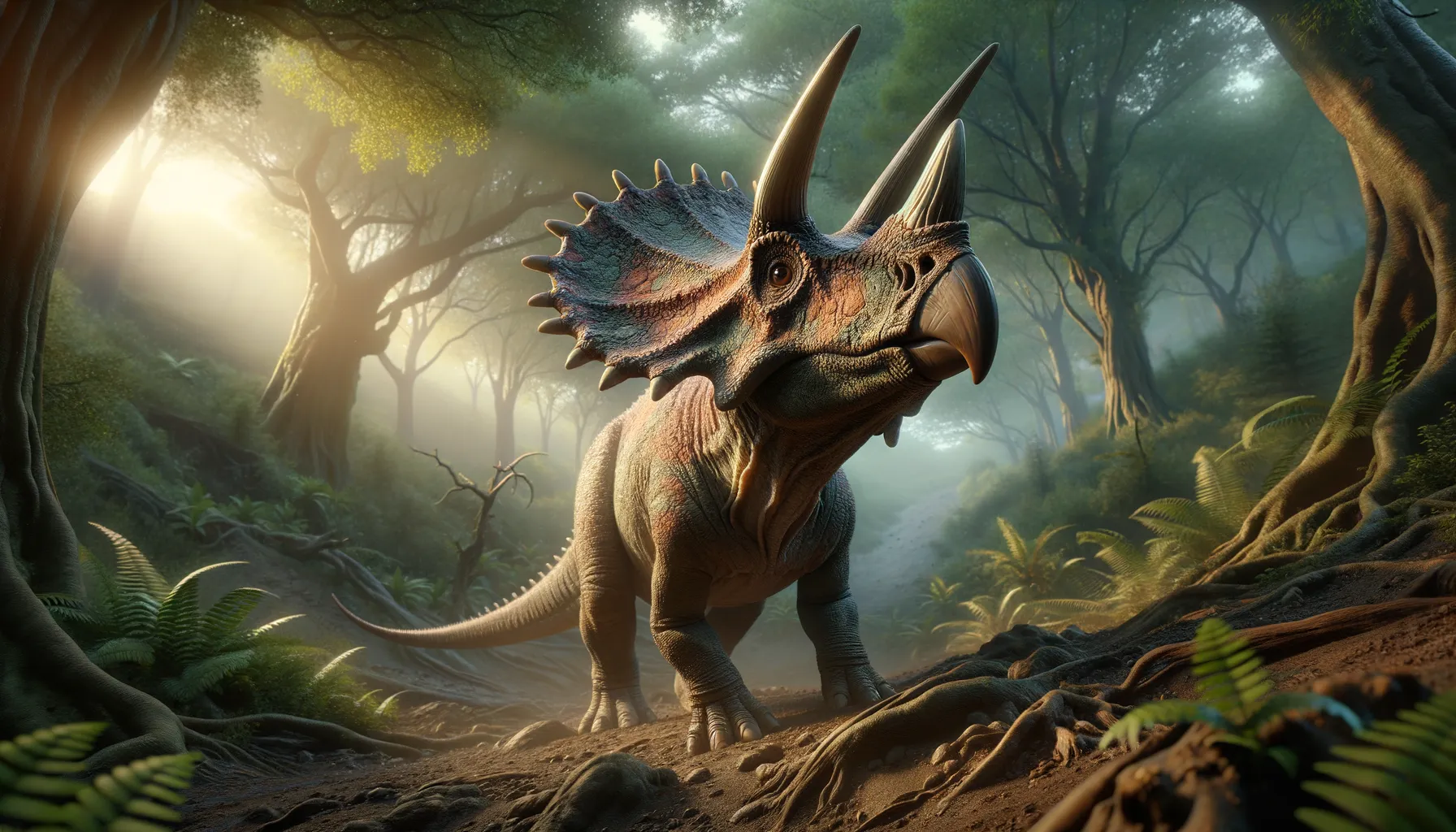
Brachyceratops
Small ceratopsian with a bony frilled crown.
Period
triassic
Length
Roughly 6 feet long.
Height
Around 4 feet at the shoulder.
Weight
Approximately 2,000 pounds (900 kilograms).
Brachyceratops was a small ceratopsian dinosaur that roamed the Earth during the Late Cretaceous period. Known primarily from juvenile specimens, it had a distinctive bony frill at the back of its head and likely shared the beaked, herbivorous lifestyle of its ceratopsian relatives. Although much about Brachyceratops remains unknown, its fossils give valuable insights into the diversity and development of horned dinosaurs.
Diet
Brachyceratops was a herbivore, primarily feeding on low-lying vegetation such as ferns and cycads. Its beak was suited to shearing plants, making it well-adapted to browsing close to the ground.
Hunting
Being a herbivore, Brachyceratops did not engage in hunting. Instead, it likely spent much of its time foraging, using its keen sense of smell to locate food. It might have had to be vigilant against predators while feeding.
Environmental challenges
Brachyceratops faced the challenge of a fluctuating environment, as the Cretaceous period was marked by changes in climate and vegetation. These changes would have impacted its food supply and habitat. Additionally, the presence of large predators meant constant vigilance was necessary for survival.
Speed
Slow-moving, typical of ceratopsians.
Lifespan
Estimated to live around 15-20 years.
First discovery
Discovered in 1913 in Montana, USA.
Fun Facts
- Brachyceratops was a small dinosaur from the late Cretaceous period.
- It had a short frill and no distinct brow horns like its larger relatives.
- Brachyceratops lived in what is now North America around 75 million years ago.
- The name 'Brachyceratops' means 'short horned face'.
- Fossils of Brachyceratops were first discovered in Montana, USA.
- It was a herbivore, feeding on plants with its beak-like mouth.
- Brachyceratops belonged to the ceratopsian family, known for their frilled skulls.
Growth and Development
Most known specimens of Brachyceratops are juveniles, giving clues about its growth. It likely underwent significant changes as it matured, with its frill and horns developing over time. Juveniles may have grown relatively quickly in the early stages to reach a size that reduced predation risk.
Habitat
Brachyceratops lived in what is now North America, inhabiting lush floodplains and forests. These environments provided ample plant life for grazing. Its habitat was characterized by a range of vegetation, from low shrubs to taller ferns and cycads.
Interaction with other species
Brachyceratops likely shared its environment with a variety of dinosaur species, including other herbivores and predatory theropods. Its interactions would have been centered around competition for food resources and avoiding predators. It might have formed herds for better protection against predators.
Natural lifespan
In its natural environment, Brachyceratops likely lived up to 15-20 years.
Reproduction
Like other ceratopsians, Brachyceratops likely reproduced by laying eggs. Clutch sizes and incubation periods remain speculative but are thought to be similar to modern reptiles. Parental care, if present, may have involved guarding the nest against predators.
Social behaviour
Brachyceratops might have been a social animal, living in small groups or family units. This behavior would have provided protection from predators and facilitated learning and development among juveniles. Their interactions within the group could include cooperative foraging.
Fossil locations
Fossils of Brachyceratops have been found in the Two Medicine Formation of Montana, USA. These sites have primarily yielded juvenile specimens, which has led to difficulties in fully reconstructing an adult Brachyceratops. The findings contribute to our understanding of ceratopsian diversity and evolution.
